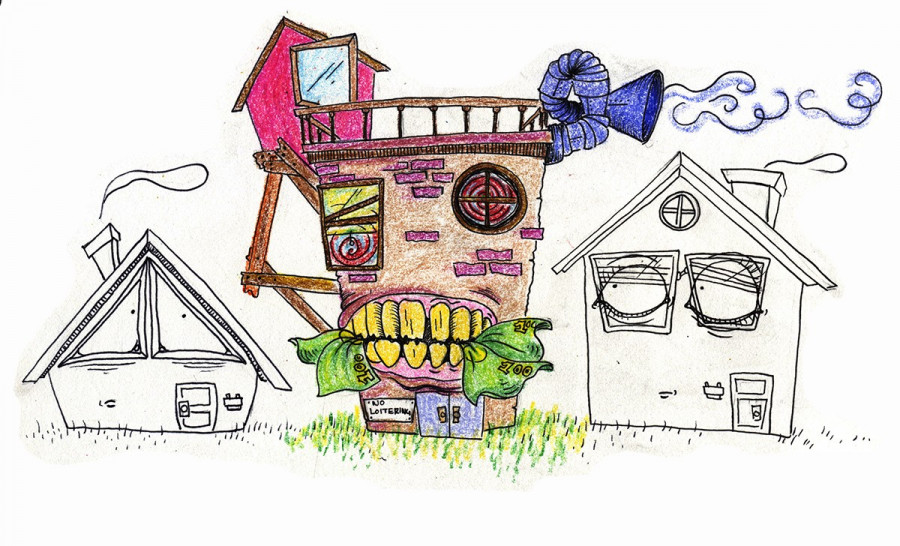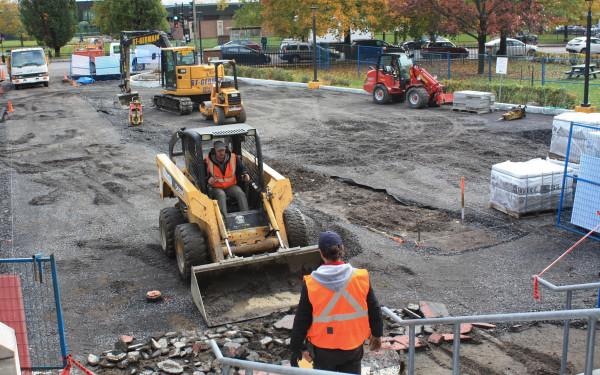Editorial: Concordia Needs to Prioritize Accessibility
In the past year, Concordia has been campaigning to transition into what they’re calling a “next generation university.”
Yet 63 per cent of our campus buildings are considered to be in a state of disrepair, according to a report commissioned by the Quebec government.
So, how are we supposed to be a modern and accessible institution when over half of our buildings are falling apart?
While Concordia administration has argued that the numbers don’t accurately portray the situation, they’ve at the same time dismissed integral annex buildings that provide services to all students, regardless of their field of study.
If you take a walk up Bishop St. or Mackay St., there are two things that all of the annex buildings have in common: they’re old, and they’re completely inaccessible to students with limited mobility. The street-facing buildings’ doors are all met by stairs—most of which by the way are in rough shape.
The annex buildings are narrow in space as it is, with hallways leaving little room for flowing movement—something a student with limited mobility would find extremely inaccessible.
With 46,000 students and counting, there’s no way the university can maintain its ability to provide a safe, stable, and accessible learning environment unless they make a proactive decision to prioritize updating these buildings.
We understand Concordia is investing in positive and progressive initiatives, like increasing research capacity and community involvement as part of its nine-step strategic plan to become a next generation university. Utilizing resources to fund projects like these is great. The question remains, however, is the university taking similar proactive steps towards making our campus safe and welcoming for all?
Knowing that renovations are only the tip of the iceberg of bureaucratic budgeting and planning, where does accessibility fit into that? If our administration dismisses buildings that are largely inaccessible as not accurately representing the situation, when will those issues be addressed?
Moving forward, our university needs to make a significant change in how it deals with its building infrastructure. A 2014 study called, “Deferred Maintenance at Canadian Universities: An Update,” says that “majority of Canadian universities are still not able to put sufficient resources into capital renewal and that, as a whole, the maintenance backlog in the system is increasing.”
What this indicates is that this is not only a problem for Quebec universities, but also an issue that is reaching far and wide in our country.
If Concordia wants to become a university fit for the future, administration needs to deal with the basic structural problems we are facing right now. While the 2014 study referenced above is talking about Canadian universities on a larger scope, it also mentions the need for renovation and renewal across the board.
The study states “we see that the number of buildings reaching this critical age will increase over the next five years, with a corresponding need for life cycle renewal or outright replacement or elimination of aging buildings.”
We know that it would be unreasonable to ask Concordia to dump all of its resources into this one—albeit complex—issue. We also understand that the school hasn’t revealed how they’re going to deal with it—or if they will at all.
The Link, however, asks that the university make a clear effort to formulate a plan to increase accessibility by addressing the decaying buildings that litter our campuses.
After all, how can we set the example as a next generation university, when our educational institutions are still dealing with old problems?




_600_375_90_s_c1.jpg)

